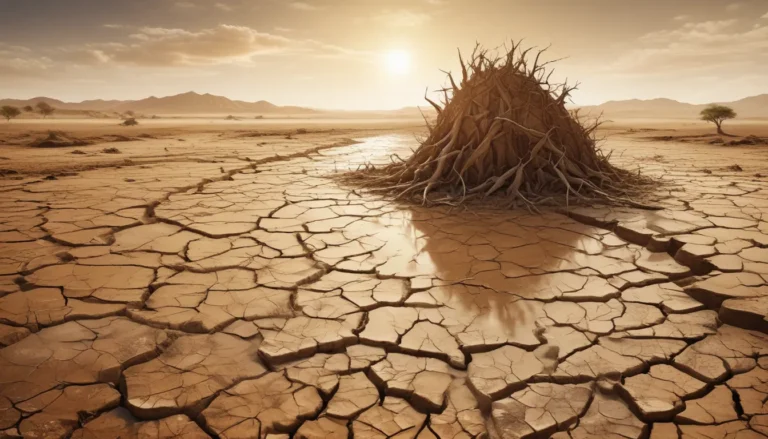A Note About Images: The images used in our articles are for illustration purposes only and may not exactly match the content. They are meant to engage readers, but the text should be relied upon for accurate information.
Introduction:
Dendritic drainage patterns are a captivating natural phenomenon that resembles the branching structure of a tree. This unique pattern not only serves as an efficient way for water distribution but also holds significance in understanding geological processes and creating visually appealing landscapes. In this article, we will delve into 18 surprising facts about dendritic drainage patterns, shedding light on their formation, distribution, and impact on various aspects of our world.
Key Takeaways:
- Dendritic drainage patterns efficiently distribute water and resources, benefiting landscapes and supporting diverse habitats.
- These patterns reveal geological history, influence agriculture, and inspire aesthetically pleasing landscapes, making them vital and fascinating features of our earth’s geography.
Nature’s Tree-Like Pattern:
The dendritic drainage pattern mimics the branching structure of a tree, with the main river channel representing the trunk and smaller tributaries resembling branches.
Widespread Distribution:
This pattern is the most common drainage pattern globally and can be observed in various landscapes, ranging from mountains to plains.
Formation Process:
Erosion and weathering of rocks shape the dendritic pattern by creating a network of channels that follow the path of least resistance.
Efficient Water Flow:
Dendritic drainage patterns enable efficient water flow by evenly distributing water across the landscape, reducing the risk of flooding.
Area Coverage:
Covering large areas, this pattern is commonly associated with flat and gently sloping terrains.
Tributary Confluence:
The dendritic pattern forms when smaller tributaries merge into larger rivers, creating an interconnected network of waterways.
Resilience to Erosion:
Due to its extensive network of channels, the dendritic drainage pattern is resistant to erosion, allowing water to flow freely without causing significant damage.
Connection to Geological Structure:
The formation of dendritic patterns is influenced by the underlying geological structure of an area, such as fault lines and rock types.
Indicator of Mature Landscapes:
The presence of dendritic drainage patterns often signifies a mature landscape that has experienced extensive erosion and development.
Shape of Drainage Basins:
Associated with elongated and dendritic-shaped drainage basins, this pattern reflects its unique branching structure.
Efficiency in Resource Distribution:
Dendritic patterns efficiently distribute resources like nutrients and sediment, benefiting plant and animal life.
Exploration of New Areas:
Scientists use dendritic drainage patterns as a tool to explore new regions and understand geological processes.
Relationship to Climate Change:
Changes in dendritic patterns can provide insights into the impact of climate change on water flow and distribution.
Geological Time Scale:
Geologists study dendritic patterns to gain information about the geological time scale and changes over millions of years.
Influence on Agriculture:
Dendritic patterns play a role in agriculture by determining drainage characteristics that affect irrigation and crop productivity.
Habitat Creation:
These patterns create diverse habitats with small tributaries and wetlands that support a wide range of plant and animal species.
Role in Civil Engineering:
Engineers utilize knowledge of dendritic patterns to design effective drainage systems for cities and infrastructure projects.
Aesthetically Pleasing Landscapes:
The harmonious flow of water in dendritic patterns creates visually appealing landscapes that captivate viewers with their natural beauty.
In conclusion, the intricate nature of dendritic drainage patterns goes beyond their functional role in water distribution. These patterns offer insights into geological processes, enhance agricultural practices, and contribute to the creation of diverse habitats. By understanding the formation and significance of dendritic patterns, we gain a deeper appreciation for the natural world and its complexities.






